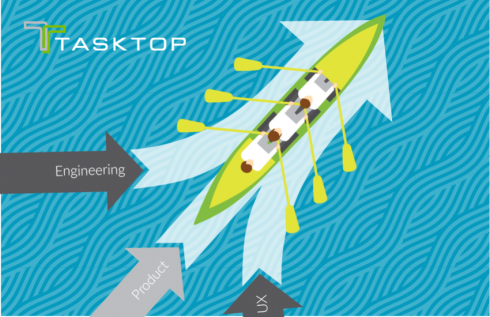
Software delivery teams are delivering software faster with the help of Agile and DevOps, but are they delivering value faster? Although release frequency is increasing, most teams lack the visibility across the product lifecycle – and the associated toolchain – to help identify the obstacles to value stream flow.
“Value stream management is not just about delivery; it’s also about protecting business value,” said Carmen DeArdo, senior VSM strategist at Tasktop. “Enterprises need to have a ‘True North,’ and challenge how they can work more closely with the business so they can be more responsive to the market and disruption. We help customers navigate that, which also means moving from a project to a product model to change the perception of IT as a cost center, rather than a revenue driver.”
Understanding the Value Stream
Flow is essential to value stream optimization and management. To understand value stream flow, the teams that plan, build and deliver software need a single source of truth into the flow of events, from the earliest stages of product ideation through production — including customer feedback. While a product life cycle seems like a continuous flow conceptually, Tasktop reveals the otherwise hidden wait-state points that interfere with value delivery.
“High-performing companies are focused on products because products are sustainable. Projects come and go,” said DeArdo. “A product model prioritizes work, ensuring you have the right distribution (across all work), as well as paying close attention to technical debt which is critical. Debt is what causes companies to go under, hurting their ability to compete with disruptive forces in the marketplace.”
Value streams begin and end with customers, but what happens in between is often a mystery. Although specialist teams have insight into artifacts within the context of a particular tool, they tend to lack visibility across the artifacts in other tools in the value stream to understand where the obstacles to value delivery reside.
“Enterprises spend a lot of time assuming they’re improving the way we work, but how do we really know?” said DeArdo. “It’s hard to determine how long it takes for a feature or defect to go through the value stream if you lack the data to quantify it. Quite often, I talk to teams that are focused on delivery speed, but they tend not to think about the toolchain as a product that is intentionally architected for speed of delivery.”
Tasktop enables teams to measure work artifacts in real-time across 58 of the most popular tools that plan, build and deliver software. They’re also able to visualize value stream flow to pinpoint bottlenecks.
“It’s about making work visible,” said DeArdo. “It’s not just the Scrum team’s board, it’s how you manage the entire value stream – features, defects, risks, debt. When you understand the value stream, you’re in a better position to prioritize work and optimize its flow. “
Optimize Value Stream Flow
Understanding value stream flow is crucial. Start small, with a few teams that might represent a slice of some given product and that have a supportive IT leader and a business leader. Then, observe the flow, considering the following five elements:
- Flow load – the number of flow items (features, risks, defects, debt) in progress
- Flow time – time elapsed from when flow item is created to delivery
- Flow velocity – number of flow items completed in a given time
- Flow distribution – allocation of flow items completed across all four work item types
- Flow efficiency – the proportion of time flow items are actively worked compared to the total time elapsed
“If you ask a developer or operations what’s slowing them down, they will typically say they are waiting — for work to flow, for infrastructure, for approval,” said DeArdo. “Those holdups are what you want to discuss and get metrics around. Pick an experiment, run it, learn from it and then use what you learn as a model. That model can be used to scale and sustain what you’re doing across the organization.”
Tasktop helps enterprises to extract technical data from the toolchains that underpin product value streams and translates them into Flow Metrics, presenting them in a common language and context that the business can understand. This view includes the value delivered, cost, quality and the team’s happiness since a lack of happiness is an indicator that something is amiss – e.g., too much debt that’s impeding a team’s ability to work.
This helps the teams doing the work to better understand the value stream flow and the business outcomes they are aiming to achieve. Conversations can center around these metrics to support strategic investment decisions in IT.
Learn more at www.tasktop.com.
Content provided by SD Times and Tasktop





